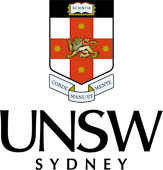
UNSW Sydney

Established in 1949, UNSW Sydney is one of Australia’s leading research and teaching universities, renowned for the quality of its graduates and its commitment to academic excellence, innovation and social impact.
Links
Displaying 1841 - 1860 of 4200 articles

Bereaved families strive to comprehend that there is nothing they could have done to prevent the death of their loved one. Viewing the crime-and-accident scene images can offer a path to healing.

The Australian Banking Association says ‘nearly 80% of bank profits go straight back to shareholders’, the majority of whom are ‘everyday Australians’. Is that right?

Public toilets are an essential amenity, but most of them aren’t places we’d want to go to unless we have to. What does the failure to provide more restful and inviting places say about us?

Litigation may sound like an obvious route for someone who experiences a medical injury. But it’s a lengthy and stressful process, and rarely provides relief to patients and their families.

Solar windows would need to trap enough light to generate power, while letting through enough to keep buildings light. Thankfully, newly developed semitransparent cells offer to do just that.

While some indoor trampoline parks operate to a high safety standard, others don’t, and there’s nothing compelling them to lift their game.

Some Australian universities have introduced a one-off sexual consent program to combat sexual assault and harassment on campus, but one-off programs are unlikely to be effective in the long term.

In short, pain medicine is able to block the processes that cause the feeling of pain. To understand why, you need to know a bit about how pain works.

Based on research comparing projects across the country, a new assessment tool calculates cost-effective ways to fund affordable housing to meet specified needs in different markets.

The Jacqui Lambie Network plan is short on detail and unlikely to improve the health system or outcomes for Tasmanians over the longer term.

Research shows the majority of consumers have low financial knowledge and experience, but they are also prone to behavioural biases that don’t help.

The data shows a tricky balancing act for policy makers. Interest rates will need to rise but too quickly could squash the recovery.

Hundreds of thousands of migrants have come through Australia’s skilled migrant program. But we are wasting many of their skills.

The now-infamous section 44 of the Australian Constitution was a last-minute change by the authors, drafted in private and accepted out of weariness.

A dozen leading researchers have issued an urgent call to action for the Murray-Darling Basin, arguing that the billions spent on water-efficient irrigation have done little for the rivers’ health.

Preventing problems like Meltdown and Spectre from reocurring requires software developers to be given sufficient information about hardware to ensure security.

The annual February festival of lampooning the largest visible donor lulls Australians into a false sense of security that there is a functioning political donations disclosure regime in place.

Weak Australian inflation and housing credit data mean the Reserve Bank is unlikely to move on interest rates.

CRISPR harnesses the natural defence mechanisms of some bacteria to cut human DNA strands. Then the DNA strand either heals itself or we inject new DNA to mend the gap. This is gene editing.

The government wants Australia to grow defence exports 800% by 2028. Investing in the cyber industry may be the only way to get there.
